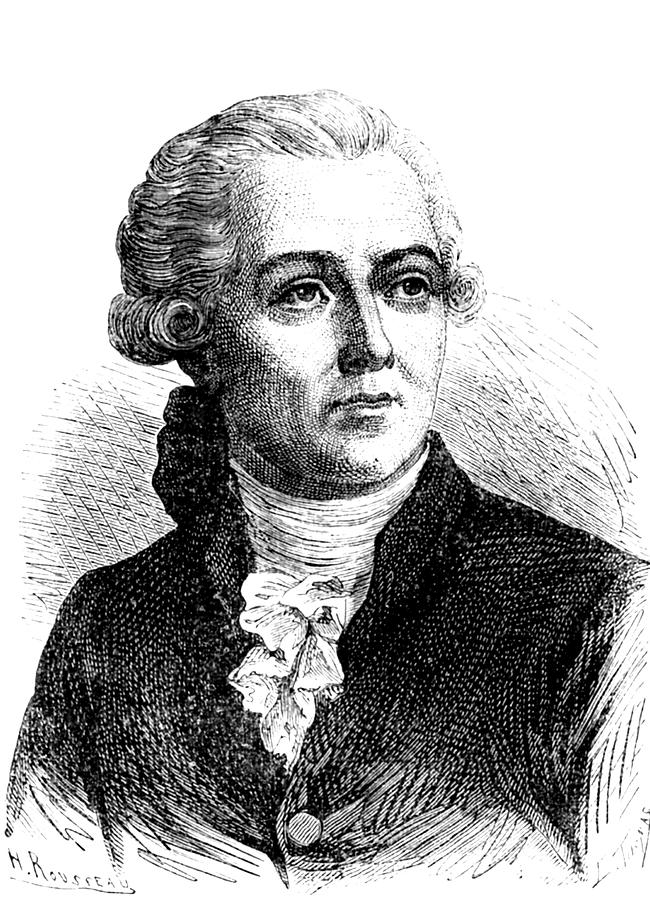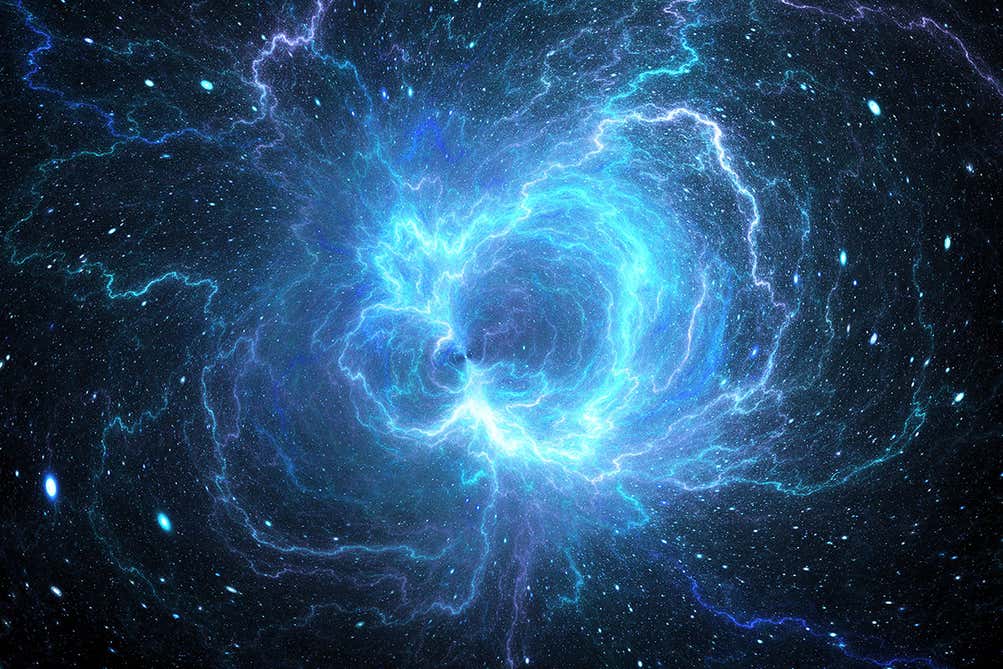In the mid-18th century, as Paris hummed with the intellectual energy of the Enlightenment, a young man quietly set out to rewrite the language of science. His name was Antoine-Laurent de Lavoisier, and he would become the mind that transformed alchemy into chemistry. His experiments would burn brighter than the candles in his laboratory, illuminating truths that would forever change how humanity understood matter, combustion, and life itself.
Lavoisier was not merely a scientist; he was a visionary who saw order in chaos, logic in mystery, and beauty in numbers. He was a man who dared to challenge centuries of belief, who stood before the invisible forces of nature and demanded their secrets. His life was brilliant and brief—ending not in a quiet laboratory, but beneath the blade of the guillotine during the French Revolution. Yet his ideas endured, igniting the foundations of modern chemistry and shaping every experiment that followed.
To understand Lavoisier is to understand the birth of modern science itself—a story of passion, intellect, courage, and tragedy.
Early Life: The Making of a Genius
Antoine-Laurent de Lavoisier was born on August 26, 1743, in Paris, France, into a world poised between superstition and discovery. His father, Jean-Antoine Lavoisier, was a wealthy lawyer, and his mother, Émilie Punctis, came from a family of prosperous landowners. Tragedy struck early—his mother died when he was only five years old. Her death left a void in the young boy’s heart, but her inheritance provided him the financial security that would later fuel his scientific pursuits.
From a young age, Antoine displayed a keen, analytical mind. He attended the Collège des Quatre-Nations, where he studied classics, philosophy, and science. It was here that his intellectual curiosity flourished. He was captivated by mathematics, natural philosophy, and the emerging ideas of experimentation. He excelled not only in the humanities but also in the rigorous disciplines that demanded precision and reasoning.
Though his father wished him to follow in his footsteps as a lawyer, Lavoisier’s heart belonged to science. The Enlightenment spirit was sweeping through Europe, encouraging reason over dogma, evidence over faith. Paris became a crucible of new ideas, and Lavoisier, with his brilliant mind and boundless curiosity, stood ready to shape its future.
The Call of Science
After completing his law degree in 1764, Lavoisier began attending public lectures at the Collège de France and the Jardin du Roi, where some of the greatest scientists of the time lectured. He studied under leading chemists like Étienne Geoffroy and Guillaume-François Rouelle, whose fiery demonstrations of chemical reactions left him mesmerized.
At the time, chemistry was still shrouded in mysticism. The alchemical tradition had persisted for centuries, filled with talk of transmutation, phlogiston, and hidden essences. There was little precision, little understanding of measurement, and much speculation. Lavoisier, with his passion for mathematics and observation, found this unsatisfactory.
He believed that chemistry should be brought under the same rigorous discipline as physics—a science of measurable quantities, not magical transformations. This conviction became his guiding light.
In 1766, his brilliance was recognized when he received the Gold Medal from the French Academy of Sciences for an essay on improving street lighting in Paris. But his ambitions stretched far beyond the glow of city lamps; he wanted to light up the dark corners of nature’s secrets.
The First Experiments: Lavoisier the Experimentalist
Lavoisier’s early experiments focused on the chemistry of earth, air, and water—the fundamental elements as they were then understood. He studied gypsum, investigating its transformation into plaster of Paris and back again, proving that chemical changes could be reversible and governed by definite laws.
By his mid-twenties, Lavoisier had joined the French Academy of Sciences, the most prestigious scientific institution in France. There, he gained access to a network of brilliant thinkers and the resources to conduct increasingly ambitious experiments.
One of his earliest breakthroughs came when he investigated the composition of air. Many scientists believed air was a single, pure element. But Lavoisier’s meticulous experiments with combustion and calcination—processes involving burning and rusting—led him to suspect that air was a mixture, not a single substance.
His experiments with phosphorus and sulfur burning in air led to a revolutionary realization: something in the air combined with these substances during combustion. This “something,” he concluded, must have mass. Matter was not destroyed in the process—it simply changed form.
The Fall of the Phlogiston Theory
Before Lavoisier’s time, chemistry was dominated by the phlogiston theory, proposed by German chemist Georg Stahl in the early 18th century. According to this idea, all flammable substances contained a mysterious element called phlogiston, which was released during burning. When a metal rusted or something burned, it was said to lose phlogiston to the air.
The theory was elegant in its simplicity but deeply flawed. It couldn’t explain why some metals gained weight when they rusted, or why air was necessary for combustion. Lavoisier found these contradictions intolerable.
He began conducting meticulous quantitative experiments—something few chemists before him had done. Using a balance with precision unheard of in his era, he measured the weights of substances before and after reactions. Every time, the results confirmed a pattern: matter was conserved. The mass of the reactants always equaled the mass of the products. Nothing was lost; it merely changed form.
This insight led to one of the most profound principles in science: the Law of Conservation of Mass.
“Nothing is lost, nothing is created, everything is transformed.”
With this principle, Lavoisier not only shattered the phlogiston myth but laid the foundation for all modern chemistry.
The Discovery of Oxygen
In 1772, Lavoisier began experimenting with mercury, heating it in sealed containers. He observed that the mercury formed a red powder, which, when heated further, released a gas that made substances burn more brightly and vigorously than ordinary air.
Unbeknownst to him, English chemist Joseph Priestley had already isolated the same gas in 1774, calling it “dephlogisticated air.” When Priestley visited Paris and shared his discovery, Lavoisier immediately grasped its significance.
Through a series of elegant experiments, Lavoisier demonstrated that this gas was not “dephlogisticated air” but a distinct element—one that combined with substances during combustion and respiration. He named it oxygen, from the Greek words meaning “acid-former,” believing (incorrectly) that it was essential in all acids.
This discovery transformed the understanding of burning, rusting, and even breathing. Combustion was not the release of phlogiston—it was the combination of a substance with oxygen. Life itself, Lavoisier realized, was a form of slow combustion.
Naming the Elements: A New Chemical Language
Lavoisier understood that science needed not only new theories but a new language. Chemistry at the time was filled with archaic, confusing terms—“spirit of salt,” “oil of vitriol,” “phlogisticated air.” He envisioned a system based on logic, clarity, and universal understanding.
In 1787, with fellow chemists Guyton de Morveau, Claude-Louis Berthollet, and Antoine François Fourcroy, Lavoisier published the Méthode de Nomenclature Chimique (Method of Chemical Nomenclature).
This revolutionary book created a rational naming system for chemical substances. For example, “dephlogisticated air” became “oxygen,” “fixed air” became “carbon dioxide,” and “inflammable air” became “hydrogen.”
By introducing this systematic approach, Lavoisier transformed chemistry from a mystical art into a coherent science. Every student of chemistry today still speaks this language—one born from his precision and order.
The Chemical Revolution
In 1789, Lavoisier published his masterpiece: Traité Élémentaire de Chimie (Elements of Chemistry). This book is often regarded as the first modern chemistry textbook. It laid out his experiments, his definitions, and his bold new vision of chemical theory.
He presented a clear explanation of the Law of Conservation of Mass, the role of oxygen in combustion, and the new system of elements and compounds. For the first time, chemical reactions were described quantitatively, using equations that balanced mass.
“Elements of Chemistry” was not just a book—it was a revolution. It unified scattered observations into a coherent framework. It was the moment when chemistry broke free from alchemy and became a modern science.
Science and Society: The Public Servant
Beyond the laboratory, Lavoisier was deeply involved in public service. His analytical mind and mathematical skill made him invaluable to the French government.
He worked as a member of the Ferme Générale, the private tax-collecting agency of the French monarchy. Though it provided him wealth and resources for his research, it would also seal his fate during the Revolution.
Lavoisier also worked on projects for the public good. He studied agricultural efficiency, developed methods to improve gunpowder production for the military, and analyzed the chemical composition of water and air for public health.
He served on commissions to improve France’s economic and educational systems, applying his scientific rigor to practical problems. His belief was clear: science should serve humanity.
Partnership in Science: Marie-Anne Lavoisier
Behind Lavoisier’s success stood a remarkable woman—his wife, Marie-Anne Pierrette Paulze. Married to him at just thirteen (he was twenty-eight), Marie-Anne became far more than a spouse. She became his collaborator, translator, illustrator, and intellectual partner.
Marie-Anne had a sharp mind and a natural talent for art. She translated English scientific works, including those of Priestley and Cavendish, into French, giving Lavoisier access to the latest discoveries. Her detailed drawings of his experimental apparatus remain masterpieces of scientific illustration.
She also hosted gatherings of scientists, philosophers, and artists, turning their home into one of Paris’s intellectual centers. Lavoisier and Marie-Anne were a true scientific partnership—a union of intellect and passion, art and chemistry.
The Breath of Life: Chemistry and Respiration
Among Lavoisier’s most profound discoveries was his realization that respiration and combustion were fundamentally the same process. Both involved the consumption of oxygen and the release of heat and carbon dioxide.
Working with fellow scientist Pierre-Simon Laplace, Lavoisier conducted experiments measuring the heat produced by animals and compared it to the heat from burning fuel. The results were astonishing: animals, he concluded, “burn” food inside their bodies using oxygen—a process we now know as metabolism.
This discovery laid the foundation for biochemistry and physiology. Lavoisier had shown that life itself obeyed the same laws as the inanimate world. The flame of a candle and the breath of a living creature were governed by the same principle—the transformation of matter and energy.
The Storm of Revolution
The late 1780s brought not only scientific triumph but political turmoil. France was in crisis—its economy strained, its people hungry, its monarchy collapsing. As a member of the Ferme Générale, Lavoisier was associated with the wealthy elite and the unpopular tax system.
When the French Revolution erupted in 1789, the very institutions that had supported his work turned against him. The National Convention abolished the Ferme Générale, and Lavoisier’s role as a tax collector made him a target for revolutionary hatred.
Despite this, he continued to serve France. He joined the commission on weights and measures, helping standardize the metric system—a monumental contribution that endures worldwide. But the political climate grew darker. The Revolution devoured even its brightest minds.
The Trial and the Guillotine
In 1794, Lavoisier and his fellow tax collectors were arrested under charges of conspiracy and corruption. The revolutionary tribunal, led by the radical Antoine Fouquier-Tinville, showed no mercy.
When a friend pleaded for leniency, the judge famously replied, “The Republic has no need of scientists or chemists.”
On May 8, 1794, Antoine-Laurent de Lavoisier was condemned to death. That same day, he was taken to the guillotine in Paris and executed. He was only 50 years old.
It was said that his wife fainted as the blade fell. The following day, his friend, mathematician Joseph-Louis Lagrange, lamented:
“It took them only an instant to cut off that head, and a hundred years may not produce another like it.”
The Legacy That Never Died
Lavoisier’s death was a tragedy, but his ideas survived to transform the world. The principles he established—careful measurement, clear definitions, and the conservation of mass—became the pillars of modern chemistry.
His chemical nomenclature remains the foundation of the language used by scientists today. His emphasis on precision inspired generations of researchers to view experiments not as curiosities, but as rigorous tests of natural law.
He united chemistry with physics, biology, and mathematics, turning it from an art of transformation into a science of understanding. His discoveries on combustion, respiration, and the nature of gases continue to influence everything from environmental science to medicine.
Lavoisier’s legacy is not only in textbooks but in the way science itself is practiced. His vision of careful observation, quantification, and clarity set the standard for modern inquiry.
The Resurrection of Reputation
Years after his death, Lavoisier’s name was cleared. In 1796, the French government officially exonerated him, recognizing his contributions to science and humanity. Marie-Anne Lavoisier, steadfast and dignified, worked tirelessly to preserve his memory and publish his remaining papers.
Today, his name adorns streets, schools, and laboratories around the world. His image has graced stamps, statues, and textbooks. Every chemistry student who balances an equation unknowingly pays tribute to him.
A Flame That Still Burns
Antoine Lavoisier’s life was a paradox of light and shadow—a man who illuminated the laws of matter only to be destroyed by the chaos of politics. Yet, like the oxygen he discovered, his influence continues to breathe life into science.
He taught us that the universe is not chaos but balance. That knowledge is born not from belief but from measurement. And that progress, though fragile, is eternal when built on truth.
Every burning flame, every breath of air, every reaction in a laboratory carries within it the spirit of Lavoisier—the man who measured the invisible and found the essence of all things.
Antoine-Laurent de Lavoisier remains, and will forever remain, the Father of Modern Chemistry, the man who taught humanity how to weigh the world and discover that even in death, nothing is lost—everything is transformed.






